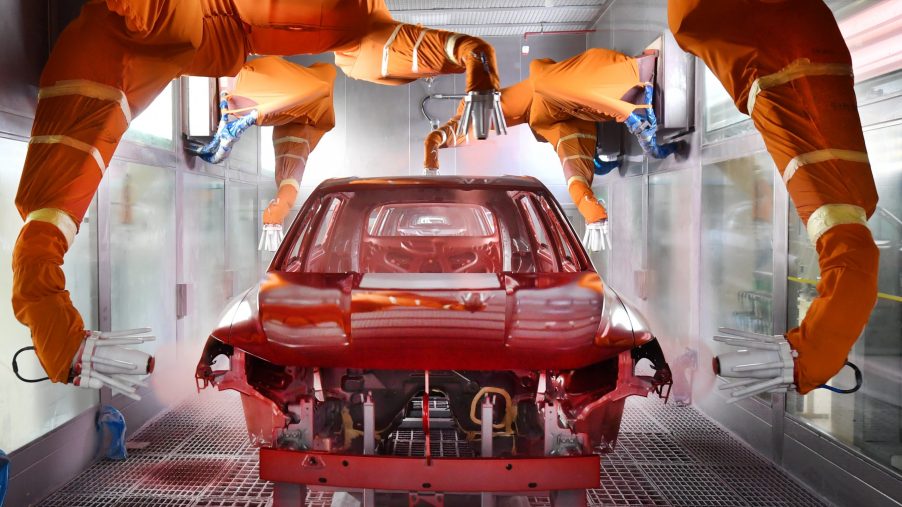When it comes to car maintenance, there’s nothing worse than discovering unsightly paint chips on your otherwise pristine vehicle. Whether you’ve been hit by road debris or suffered a minor parking lot mishap, paint chips can significantly detract from your car’s appearance. In this guide, we will walk you through how to fix paint chips on car step-by-step and cover the essential techniques and tips to restore your car’s finish to its former glory.

Understanding Paint Chips
Before diving into the repair process, it’s essential to understand what paint chips are and how they form. Paint chips occur when small pieces of your car’s paint layer are damaged or knocked off, usually by rocks, gravel, or other debris on the road. Over time, exposure to the elements can cause the exposed metal to rust, leading to more significant problems.
Why Fixing Paint Chips is Crucial
Ignoring paint chips can lead to the following issues:
- Rust Formation: Exposed metal can quickly oxidize, leading to rust and corrosion.
- Decreased Resale Value: Visible paint damage can reduce your vehicle’s market value.
- Overall Appearance: Paint chips can make your car look old and neglected.
Materials and Tools Needed
Before you start the repair process, gather the following materials and tools:
- Automotive paint touch-up kit
- Fine-grit sandpaper
- Rubbing alcohol
- Microfiber cloths
- Primer
- Paintbrush
- Clear coat
- Wax and polish
Step-by-Step Guide to Fixing Paint Chips
Step 1: Clean the Area
Begin by thoroughly cleaning the chipped area with soap and water. This will remove any dirt, debris, and grease that could interfere with the repair process. Dry the area completely with a microfiber cloth.
Step 2: Sand the Chip
Use fine-grit sandpaper to gently sand the edges of the chip. This helps to smooth out the damaged area and ensures that the new paint will adhere properly. Be careful not to sand too much and damage the surrounding paint.
Step 3: Apply Rubbing Alcohol
Dab a small amount of rubbing alcohol on a microfiber cloth and wipe the sanded area. This will remove any remaining dust and contaminants, ensuring a clean surface for the paint application.
Step 4: Apply Primer
Using a small brush, carefully apply a thin layer of primer to the chipped area. Allow the primer to dry completely according to the manufacturer’s instructions.
Step 5: Apply Touch-Up Paint
Once the primer is dry, apply the touch-up paint using a fine brush. Start with a thin layer and build up the paint gradually. Make sure to match the paint color as closely as possible to your car’s original finish. Allow each layer to dry before applying the next one.
Step 6: Apply Clear Coat
After the touch-up paint has dried, apply a clear coat to protect the repaired area and blend it with the surrounding paint. Use a fine brush to apply a thin layer of clear coat, and allow it to dry completely.
Step 7: Polish and Wax
To finish the repair, polish the area with a high-quality automotive polish to restore the shine. Follow up with a layer of wax to protect the repaired area and the rest of your car’s paint.
Preventing Future Paint Chips
Protective Measures
Taking preventive measures can help reduce the risk of future paint chips:
- Install a clear bra or paint protection film on the front of your car.
- Apply a ceramic coating to your car’s paint.
- Maintain a safe following distance to avoid debris kicked up by other vehicles.
Regular Maintenance
Regularly wash and wax your car to maintain the integrity of the paint and identify any chips early before they worsen. Consider adding a protective coat seasonally to maintain your car’s longevity.
Professional Help vs. DIY
When to Seek Professional Help
While small chips can often be repaired at home, larger or deeper chips may require professional attention. A professional can ensure that the repair is seamless and matches your vehicle’s paint perfectly.
Benefits of DIY Repairs
DIY repairs can save money and offer a sense of satisfaction. By following this guide, you can achieve professional-looking results without the need for expensive repair shops.
Additional Resources
For more information and professional advice on car paint repairs, check out this guide from Spinny. Additionally, you can refer to this Wikipedia page on automotive paint for comprehensive details.
FAQs
Q: Can I use nail polish to fix paint chips?
A: While some people might consider using nail polish as a quick fix, it’s not recommended. Automotive touch-up paint is formulated to match your car’s paint color and durability.
Q: How much do professional paint chip repairs cost?
A: The cost of professional repairs can vary widely based on the size and severity of the chip, as well as the make and model of your vehicle. Generally, prices range from $50 to $150 for minor repairs.
Q: Will a paint chip repair be noticeable?
A: If done correctly, a paint chip repair should be nearly invisible. Following the steps outlined in this guide will help you achieve a professional-looking result.

Conclusion
With the right tools and techniques, fixing paint chips on your car can be a straightforward process. By following this comprehensive guide, you’ll be able to restore your car’s appearance and protect it from further damage. Remember, prevention is key, so take proactive steps to protect your car’s paint and maintain its value.